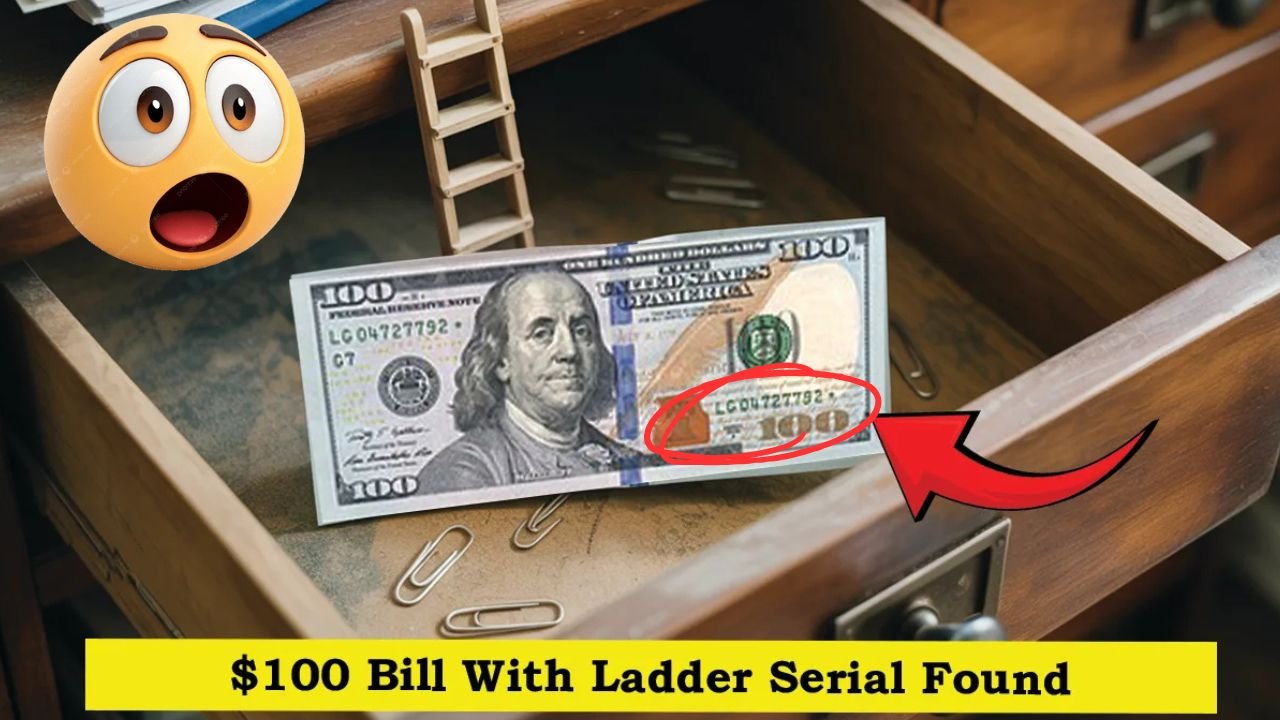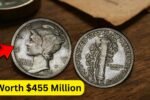$100 Bill With Ladder Serial Found in Office Desk Drawer: One ordinary day turned into an unforgettable moment when a man cleaning out his office desk drawer found something amazing. Tucked inside, under some old papers, was a $100 bill — but it wasn’t just any regular note. This one had a special serial number that made it extremely rare and valuable.
What Is So Special About This $100 Bill?
At first glance, the bill looked normal. But on closer inspection, its serial number caught attention. The bill had what’s called a “ladder serial number.” This means the digits were printed in a perfect increasing order — like 12345678. Bills like this are very rare to find in circulation.
The Value Behind the Serial Number
So, why does a serial number matter so much? In the world of collectors, unique or patterned serial numbers add a huge amount of value to currency. This particular $100 bill, due to its perfect ladder serial number, is now valued at an incredible $880,000. That’s nearly 8,800 times its face value!
How Rare Are Ladder Serial Numbers?
There are billions of $100 bills printed, but the chances of finding a note with an exact ladder sequence like 12345678 or 87654321 are extremely small. Only a few exist, and when they do, collectors are willing to pay large amounts to own one. These notes are considered almost like art pieces in the currency world.
Who Found the Bill?
The person who discovered the bill chose to stay anonymous, but reports say they had no idea about its value at first. It was just an old bill kept in a drawer, forgotten for years. Only after showing it to a currency expert did they learn it was worth a fortune.
What Happened After the Bill Was Found?
Once the bill’s true value was confirmed, it was put up for evaluation with currency dealers and collectors. Offers quickly poured in. Eventually, it was valued at $880,000 — a life-changing amount for a bill that was sitting unused in a drawer for years.
What Can We Learn From This?
This story teaches us that sometimes valuable things are hiding in plain sight. People often overlook old currency or collectibles without realizing what they might be worth. It’s a good reminder to check old drawers, boxes, or even wallets carefully — you never know what you might find.
Ladder Serial Numbers: A Closer Look
Let’s understand a bit more about what makes a ladder serial number so valuable. The U.S. Treasury prints billions of notes, but only a few follow a straight pattern. Here’s a simple table showing how ladder serial numbers compare with other rare types:
| Serial Number Type | Example | Rarity Level | Collector Value |
|---|---|---|---|
| Ladder (Ascending) | 12345678 | Extremely Rare | Very High |
| Ladder (Descending) | 87654321 | Extremely Rare | Very High |
| Repeater | 45454545 | Rare | High |
| Radar | 12344321 | Rare | High |
| Solid | 77777777 | Very Rare | High |
Could You Have a Valuable Bill Too?
You might be wondering if there are hidden treasures in your own home. If you’ve kept old currency, especially bills with unusual or patterned numbers, it’s worth taking a closer look. Some collectors even pay high prices for bills with just minor serial patterns.
Final Thoughts
It’s not every day that someone finds nearly a million dollars in an office drawer. This rare $100 bill is a perfect example of how special details — like serial numbers — can make a huge difference in the world of collectibles. It’s a good idea to stay curious and keep your eyes open. Who knows what you might discover next?
FAQs
Q: What is a ladder serial number?
A ladder serial number is a sequence where the digits appear in perfect increasing or decreasing order, like 12345678 or 87654321.
Q: Why is this $100 bill worth $880,000?
Because of its ultra-rare ladder serial number, which is highly prized by collectors.
Q: Can I find a valuable bill in my own house?
Yes, it’s possible. Always check the serial numbers of old bills — patterns like ladders, radars, or solids can be worth a lot.
Q: Where can I sell a rare bill?
You can contact currency dealers, collectors, or auction houses that specialize in rare notes.




